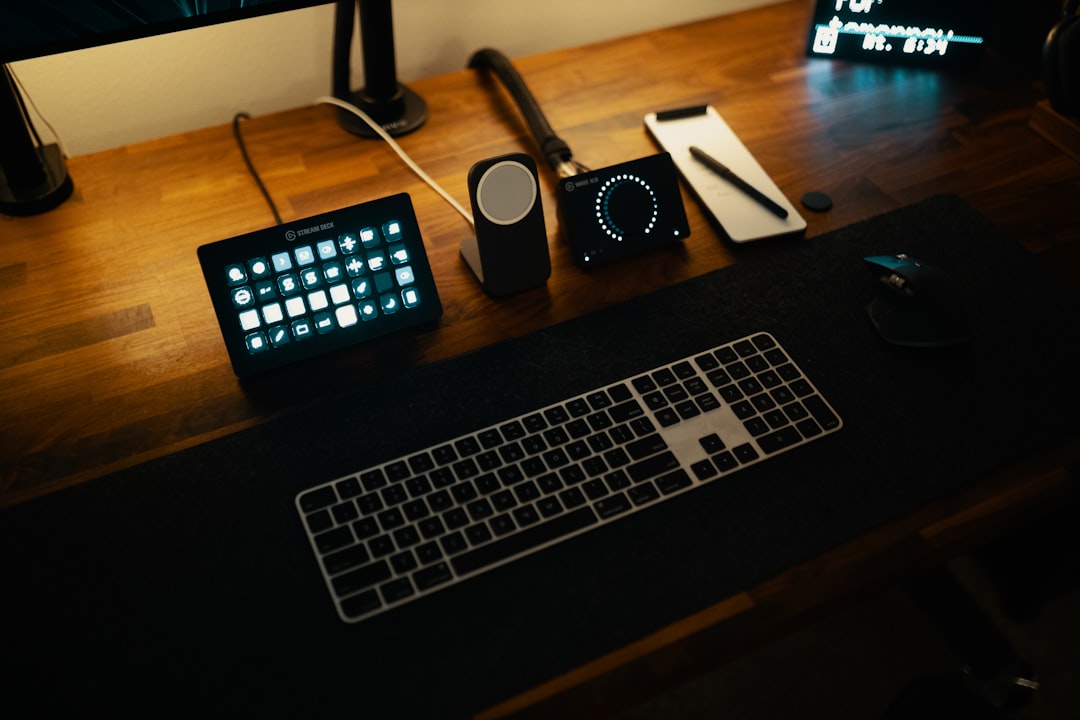Essential Tools for Staying Connected in Anywhere Offices

Introduction
The way people work has changed dramatically over the past decade. Today a professional can set up a productive office in a coffee shop in Berlin, a shared desk in a coworking hub in Bangkok, or a quiet nook in a public library in Toronto. This flexibility is only possible because the tools that keep us connected have become more reliable, more affordable, and more adaptable to a variety of physical environments. Whether you are a freelancer hopping between city‑center workspaces, a member of a distributed team that meets in coworking locations around the world, or a manager responsible for keeping a global staff aligned, the ability to stay connected is the single most important factor in maintaining productivity and delivering results.
In this article we explore the essential tools that make staying connected in “anywhere offices” not just possible but efficient and secure. We break the discussion into logical categories, examine why each tool matters, highlight leading options on the market, and offer practical advice for selecting the right combination for your specific workflow. By the end of this guide you will have a clear roadmap for building a robust connectivity stack that works seamlessly across borders, time zones, and network conditions.
Core Connectivity Foundations
High‑Speed Internet
A stable, high‑speed internet connection is the backbone of any remote or flexible workspace. In a traditional office the network is centrally managed and often includes redundant links, enterprise‑grade firewalls, and quality‑of‑service (QoS) policies that prioritize business traffic. When you work from a coworking space or a public venue you must rely on the provider’s infrastructure, which can vary widely in speed and reliability.
What to look for:
- Minimum download speed of 25 Mbps for video calls, cloud‑based document editing, and large file transfers.
- Upload speed of at least 5 Mbps to ensure smooth screen sharing and voice clarity.
- Low latency (under 50 ms) for real‑time collaboration tools such as virtual whiteboards and live coding sessions.
If the primary broadband connection is unreliable, a backup solution should be part of your core toolkit.
Mobile Hotspot & 5G
A personal mobile hotspot gives you an independent internet source that you can activate in seconds. Modern 5G networks deliver speeds that rival many fiber connections, especially in urban centers where carriers have rolled out extensive coverage. Having a hotspot device or using a smartphone’s tethering feature provides three critical benefits:
- Redundancy – Switch instantly if the coworking space Wi‑Fi drops.
- Security – A personal hotspot is encrypted with a unique password that only you control.
- Mobility – Continue working while traveling between meetings or moving to a different floor of a building.
When choosing a hotspot device, prioritize models that support dual‑band Wi‑Fi (2.4 GHz and 5 GHz), have a battery life of at least 8 hours, and can accommodate multiple devices without a noticeable performance drop.
Virtual Private Network (VPN)
A VPN encrypts all traffic between your device and a remote server, shielding your data from eavesdropping on public Wi‑Fi networks. It also allows you to appear as though you are connecting from a specific geographic location, which can be essential for accessing region‑locked corporate resources or complying with data‑residency regulations.
Key considerations:
- Use a reputable provider that offers no‑log policies and strong encryption (AES‑256).
- Look for kill‑switch functionality that automatically cuts internet access if the VPN connection drops.
- Opt for a service with multiple server locations so you can choose the one with the lowest latency to your corporate network.
Many organizations now provide a dedicated corporate VPN that integrates with single‑sign‑on (SSO) solutions, making it the preferred choice for employees who need direct access to internal systems.
Communication Platforms
Staying in touch with teammates, clients, and partners is the lifeblood of remote work. The right communication suite reduces friction, clarifies expectations, and fosters a sense of community even when people are scattered across continents.
Video Conferencing
High‑quality video meetings have become the default for daily stand‑ups, client presentations, and brainstorming sessions. The best platforms deliver crisp video, low latency audio, and robust screen‑sharing capabilities, while also offering features such as meeting recordings, virtual backgrounds, and integrated transcription.
Popular solutions:
- Zoom – Known for reliability, breakout rooms, and large‑meeting capacity.
- Microsoft Teams – Deep integration with Office 365, useful for organizations already on the Microsoft ecosystem.
- Google Meet – Simple interface, seamless integration with Google Workspace.
When selecting a platform, test it in the environment where you will use it most. Some coworking spaces have Wi‑Fi that throttles video traffic, so a tool that can adapt bitrate dynamically will provide a smoother experience.
Instant Messaging
Real‑time text chat allows quick questions, rapid feedback, and informal collaboration. A good messaging app should support threaded conversations, file sharing, and robust search capabilities.
Key options:
- Slack – Channels for organized discussions, extensive app ecosystem, and powerful integrations.
- Microsoft Teams – Combines chat with video and document collaboration in a single interface.
- Discord – Originally for gamers but now used by many creative teams for its voice channels and community features.
Consider adopting a “chat etiquette” policy that defines response expectations, channel naming conventions, and guidelines for off‑hours messaging to maintain work‑life balance.
Even in a highly chat‑driven environment, email remains essential for formal communication, external outreach, and documentation. A reliable email client that supports multiple accounts, advanced search, and offline access can be a productivity booster.
Recommendations:
- Outlook – Strong calendar integration, focused inbox, and corporate‑grade security.
- Gmail – Powerful search, label system, and integration with Google Workspace.
Enable two‑factor authentication (2FA) on all email accounts to protect against credential theft, especially when you are accessing email from shared or public computers.
Collaboration Suites
When teams are distributed across different coworking locations, the ability to co‑author documents, manage tasks, and visualize ideas in real time is crucial.
Cloud Document Editing
Real‑time editing eliminates the need for version control headaches. The leading platforms automatically save changes, track revision history, and allow simultaneous access from any device.
- Google Workspace – Docs, Sheets, Slides, and Drive provide a seamless, web‑based experience.
- Microsoft 365 – Word, Excel, PowerPoint, and OneDrive offer robust feature sets and offline capabilities.
Choose the suite that aligns with your organization’s existing tools and data‑security policies.
Project Management
A visual overview of tasks, deadlines, and dependencies helps teams stay aligned despite being physically apart.
- Asana – Boards, timelines, and workload views that are easy to customize.
- Trello – Card‑based system suitable for simple Kanban workflows.
- ClickUp – All‑in‑one solution with docs, goals, and time‑tracking modules.
Look for platforms that integrate with your communication tools so that updates in one system automatically reflect in the other.
Virtual Whiteboarding
Creative sessions such as mind‑mapping, UI sketching, or strategic planning benefit from a shared canvas that mimics a physical whiteboard.
- Miro – Infinite canvas, templates, and real‑time cursor presence.
- Mural – Sticky notes, facilitation features, and robust security controls.
A whiteboard that works directly in the browser ensures that participants can join from any device without installing additional software.
Security & Privacy Essentials
Working from public or semi‑public spaces introduces new security risks. Implementing a layered security approach protects both personal data and corporate assets.
Password Manager
Storing and retrieving strong, unique passwords for each service is a cornerstone of good security hygiene.
- LastPass – Cloud‑based vault, secure sharing, and biometric unlock.
- 1Password – Travel mode that hides sensitive entries when crossing borders.
- Bitwarden – Open‑source solution with end‑to‑end encryption.
Choose a manager that offers a browser extension for quick autofill and a mobile app for on‑the‑go access.
Multi‑Factor Authentication (MFA)
Adding a second verification step dramatically reduces the chance of unauthorized access.
- Use authenticator apps such as Authy or Microsoft Authenticator instead of SMS codes, which can be intercepted.
- For high‑risk accounts, consider hardware tokens like YubiKey that support FIDO2 standards.
Enable MFA on all cloud services, VPNs, and email accounts to create a strong defensive perimeter.
Endpoint Protection
Laptops and mobile devices are the primary entry points for malware in a coworking environment.
- Install reputable antivirus/anti‑malware software that provides real‑time scanning.
- Enable automatic operating system updates to patch vulnerabilities promptly.
- Use disk encryption (BitLocker on Windows, FileVault on macOS) to protect data if a device is lost or stolen.
Regularly back up critical files to a secure cloud storage service to mitigate data loss.
Productivity Enhancers
Even with perfect connectivity, distractions and inefficient habits can erode productivity. A set of specialized tools helps maintain focus, track progress, and automate repetitive tasks.
Time‑Tracking
Understanding how time is allocated across projects informs better planning and billing.
- Toggle Track – Simple start/stop timer, project tagging, and reporting.
- Clockify – Free tier with unlimited users and detailed analytics.
Integrate the timer with your project management platform to automatically log hours against tasks.
Focus & Distraction Management
Coworking spaces can be bustling, and background noise may affect concentration.
- Noise‑cancelling headphones reduce ambient sound and improve audio quality for calls.
- Focus apps such as Forest or StayFocusd limit access to distracting websites during work blocks.
Experiment with the Pomodoro technique (25‑minute work intervals followed by short breaks) to maintain sustained attention.
Automation
Repetitive workflows can be streamlined with automation platforms, freeing mental bandwidth for higher‑value work.
- Zapier – Connects apps to automate actions like saving email attachments to cloud storage.
- IFTTT – Simple triggers for personal tasks, such as posting a Slack message when a calendar event starts.
Start by identifying three recurring manual steps in your daily routine and build a small automation to handle each.
Hardware Essentials for Anywhere Offices
While software tools are critical, the physical devices you use determine the quality of the experience. Investing in reliable, portable hardware pays dividends in comfort and efficiency.
Laptop
A lightweight yet powerful laptop serves as the central hub of your mobile office.
- Aim for at least an Intel i5 or AMD Ryzen 5 processor, 16 GB RAM, and a solid‑state drive (SSD) of 512 GB or more.
- Consider models with long battery life (8 hours or more) and a durable chassis that can survive frequent travel.
If you often work with graphics‑intensive applications, a laptop with a dedicated GPU may be warranted.
External Monitor
An additional screen expands real estate, reducing the need to constantly switch windows.
- Portable USB‑C monitors (13‑15 inches) are easy to pack and can be powered directly from the laptop.
- For fixed coworking locations, a 24‑inch IPS display with an ergonomic stand improves posture and productivity.
Choose a monitor that supports a resolution of at least 1920 × 1080; 4K is beneficial for detailed design work.
Headset & Microphone
Clear audio is essential for video calls, especially in noisy environments.
- Over‑ear headphones with active noise cancellation (ANC) provide isolation and comfort.
- A dedicated boom microphone captures voice more accurately than built‑in laptop mics.
Brands such as Jabra, Logitech, and Blue offer models that balance price and performance.
Keyboard & Mouse
Ergonomic input devices reduce strain during long typing sessions.
- Mechanical keyboards with tactile switches improve typing speed and feedback.
- A compact, wireless mouse that can be used on any surface (including glass) adds flexibility.
If you travel often, a foldable or detachable keyboard can save space in your bag.
Docking Station
A docking station turns a laptop into a full‑featured workstation with a single cable connection.
- Look for docks that support power delivery (PD) of at least 65 W to charge the laptop while connected.
- Ensure the dock offers multiple ports: HDMI or DisplayPort, USB‑A, USB‑C, Ethernet, and SD card reader.
This setup allows you to plug in all peripherals once and walk away, then reconnect quickly when you return to the desk.
Mobile Solutions for On‑the‑Go Work
Even the most well‑equipped desk cannot replace the need to be productive while moving between locations. Mobile‑first tools keep you connected and productive during transit.
Cloud Storage Apps
Accessing files from any device requires a reliable cloud storage solution.
- Google Drive, OneDrive, and Dropbox synchronize folders automatically and provide offline access options.
- Use selective sync to keep only the files you need on the local device, conserving storage space.
Set up shared folders with appropriate permission levels to collaborate securely with teammates.
Mobile Office Suites
When you need to edit documents on a tablet or smartphone, a full‑featured office suite is essential.
- Microsoft Office Mobile offers Word, Excel, and PowerPoint with most desktop features.
- Google Docs, Sheets, Slides work directly in the browser or via dedicated apps, supporting real‑time collaboration.
Pair these apps with a Bluetooth keyboard for a laptop‑like experience on the go.
Remote Desktop
In some cases you may need to run software that only exists on a corporate workstation. Remote desktop tools let you stream a full desktop environment to any device.
- TeamViewer, AnyDesk, and Microsoft Remote Desktop provide low‑latency connections and encryption.
- Ensure your VPN is active before establishing a remote session to maintain security.
Use a wired Ethernet connection when possible to improve stability, especially for graphics‑heavy tasks.
Managing Multiple Locations Efficiently
Working across several coworking spaces introduces logistical challenges such as varying network policies, different ergonomic setups, and disparate device availability. A strategic approach to location management helps maintain consistency.
Unified Communications (UC)
A UC platform consolidates voice, video, messaging, and presence into a single interface.
- RingCentral, 8x8, and Microsoft Teams offer cloud‑based phone numbers, call routing, and voicemail transcription.
- By centralizing communication, you avoid the need to switch between multiple apps when you move between locations.
Configure call forwarding rules that direct incoming calls to your mobile, desk phone, or softphone based on your current status.
Cloud‑Based Desktop (DaaS)
Desktop‑as‑a‑Service delivers a complete Windows or Linux desktop environment from the cloud.
- Services like Amazon WorkSpaces, Microsoft Windows 365, and Citrix Virtual Apps allow you to launch a familiar desktop from any device with an internet connection.
- This approach eliminates the need to carry a heavy laptop while still providing access to specialized software and corporate policies.
Choose a DaaS plan that matches your compute requirements and includes sufficient storage for daily tasks.
Location‑Aware Scheduling
When you know in advance which coworking space you will be using, plan your day around its amenities.
- Reserve a desk or meeting room through the space’s booking platform to guarantee a quiet area for video calls.
- Check the space’s Wi‑Fi speed reports (many providers publish real‑time performance dashboards) to anticipate any connectivity issues.
Having a pre‑planned schedule reduces the mental load of figuring out logistics on the fly.
Choosing the Right Tool Stack
Every professional’s workflow is unique, but a systematic selection process helps you avoid unnecessary complexity and cost.
Assess Your Core Needs
- Identify the primary tasks you perform daily (e.g., client presentations, code reviews, design mockups).
- Determine the bandwidth and latency requirements for each task.
Create a checklist that ranks tools based on how well they meet those specific needs.
Budget Considerations
- Free tiers are attractive, but they often come with limitations such as storage caps, participant limits, or reduced security features.
- Evaluate the total cost of ownership, including subscription fees, hardware purchases, and potential training expenses.
If you belong to a company, explore corporate licensing agreements that may provide discounts or centralized management.
Scalability & Integration
Select tools that can grow with you. A platform that supports API access allows you to integrate with future services or automate new workflows.
- For example, a project management tool with webhook capabilities can trigger a Slack notification whenever a task status changes.
- A cloud storage service that supports SSO simplifies onboarding new team members.
Prioritize solutions with robust documentation and active developer communities.
Trial and Feedback
Most SaaS products offer a 14‑day free trial. Use this period to test performance in your typical coworking environments.
- Conduct a sample video call, upload a large file, and share a document with a colleague to evaluate real‑world experience.
- Gather feedback from teammates who will also be using the tool to ensure it fits the broader team’s workflow.
Iterate based on this feedback before committing to a long‑term contract.
Future Trends Shaping Anywhere Offices
Staying ahead of emerging technologies helps you future‑proof your connectivity stack.
Widespread 5G Adoption
As 5G networks expand, mobile hotspots will deliver gigabit speeds, reducing reliance on fixed broadband. Expect longer battery life for 5G routers and more affordable data plans tailored for remote workers.
Mesh Wi‑Fi in Coworking Spaces
Mesh networking provides consistent coverage across large open‑plan offices. Future coworking venues will likely advertise “mesh‑ready” Wi‑Fi, offering seamless roaming for devices moving between conference rooms and desks.
AI‑Powered Assistants
AI assistants integrated into communication platforms can automatically generate meeting minutes, suggest agenda items, and even draft follow‑up emails. Look for tools that incorporate natural‑language processing to reduce manual administrative tasks.
Zero‑Trust Security Models
Zero‑trust architectures verify every device and user before granting access to resources, regardless of network location. Implementing a zero‑trust approach means adopting identity‑centric tools such as Okta, Auth0, and conditional access policies.
Virtual Reality (VR) Collaboration
While still emerging, VR meeting rooms promise immersive collaboration experiences. Companies experimenting with VR can conduct design reviews or product demos in a shared virtual space, eliminating the need for physical proximity.
Conclusion
Creating a productive “anywhere office” hinges on assembling a cohesive set of tools that address connectivity, communication, collaboration, security, and ergonomics. By securing a reliable high‑speed internet source, backing it up with a mobile hotspot, and protecting your traffic with a robust VPN, you lay the foundation for uninterrupted work. Complement this foundation with modern video‑conferencing, instant messaging, and cloud document platforms to keep conversations fluid and projects moving forward.
Security must never be an afterthought; password managers, multi‑factor authentication, and endpoint protection shield you from the heightened risks of public networks. Productivity boosters such as time‑tracking, focus apps, and automation free mental bandwidth for creative and strategic tasks. Pair these software solutions with portable, high‑performance hardware—laptop, external monitor, noise‑cancelling headset, and docking station—to craft a comfortable and efficient workspace wherever you set up shop.
Finally, treat tool selection as an ongoing process. Regularly assess performance, gather team feedback, and stay attuned to emerging trends like 5G, mesh Wi‑Fi, and AI‑driven assistants. With a thoughtful, adaptable toolkit, you can thrive in any coworking hub, café, or hotel lobby, turning the world into your office without sacrificing connectivity, security, or productivity.
Random Posts

Navigating Remote Job Listings to Land Your Dream Role
Learn a step by step strategy to cut through endless remote listings, target the right boards, craft a remote ready resume, ace virtual interviews and land your dream remote job.
1 month ago

Mastering Remote Collaboration Across Time Zones with Essential Productivity Tools
Learn how to turn time-zone friction into a competitive edge with proven processes and the top productivity tools that enable seamless async work, clear communication, and unstoppable global teamwork.
2 months ago

Mastering Remote Work and Productivity for Digital Nomad Entrepreneurs
Learn how to turn the freedom of digital nomad life into consistent productivity with proven systems, habits and tools for remote work, finance, and client management so you can thrive anywhere.
1 month ago

Secrets of High Performing Digital Nomads
Discover the hidden playbook of top digital nomads, how disciplined freedom, a growth oriented identity, and proven systems turn remote life into high performance. Follow concrete steps to thrive wherever you work.
2 months ago

Financial Freedom Guide for the Worldly Freelancer
Discover a practical roadmap for nomadic freelancers to achieve financial freedom, from building resilient income and choosing smart banking tools to mastering cross-border taxes and legal safeguards while you travel the world.
4 days ago
Latest Posts

Essential Software Every Remote Professional Should Use
Master remote work with essential tools: instant messaging like Slack, high definition video calls such as Zoom, and asynchronous voice apps. Streamline communication, stay connected and boost productivity.
1 day ago

Mastering Remote Work Productivity for Digital Nomads and Freelancers
Learn proven habits, tools, and tactics that help digital nomads and freelancers stay focused, deliver quality work, and maintain a sustainable lifestyle while traveling the world.
1 day ago

Tech‑Friendly European Towns Perfect for Remote Living
Discover Europe’s best small towns where fast internet, affordable living and vibrant tech communities let you work remotely while soaking up historic charm, lakeside views or mountain air.
1 day ago